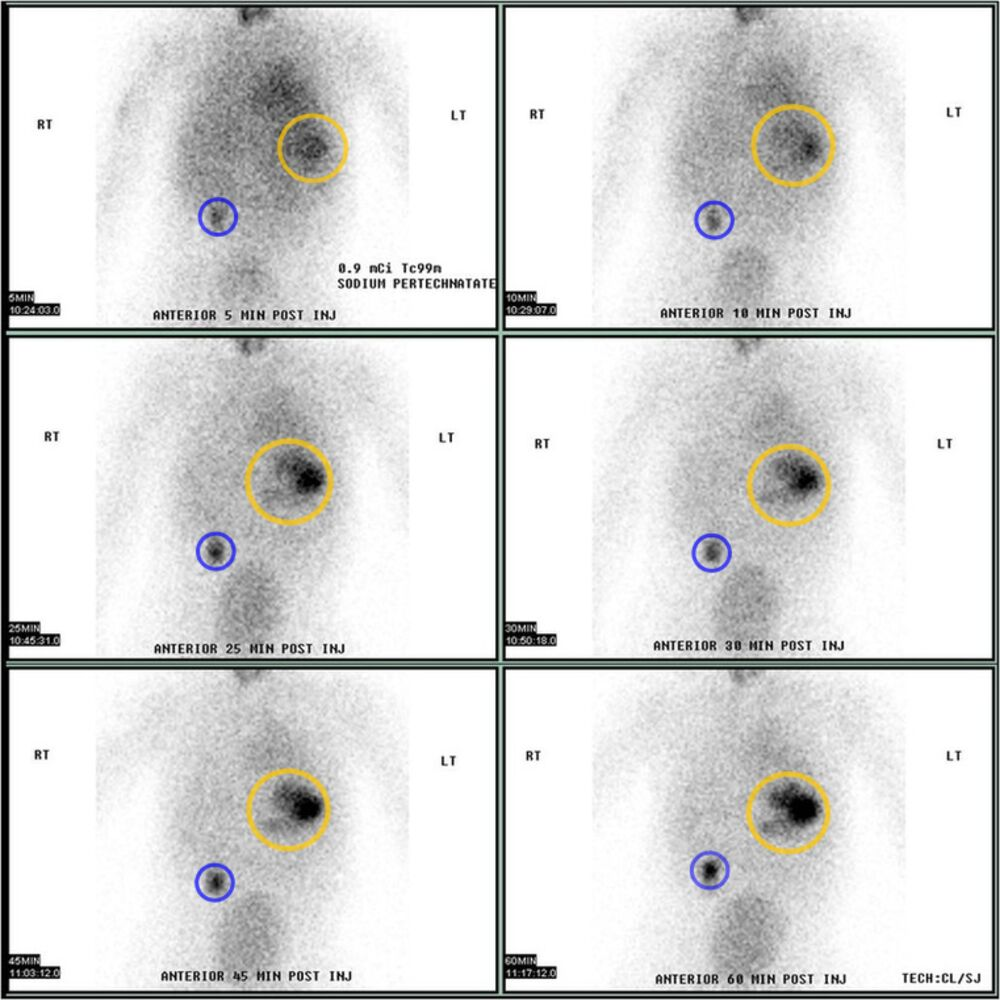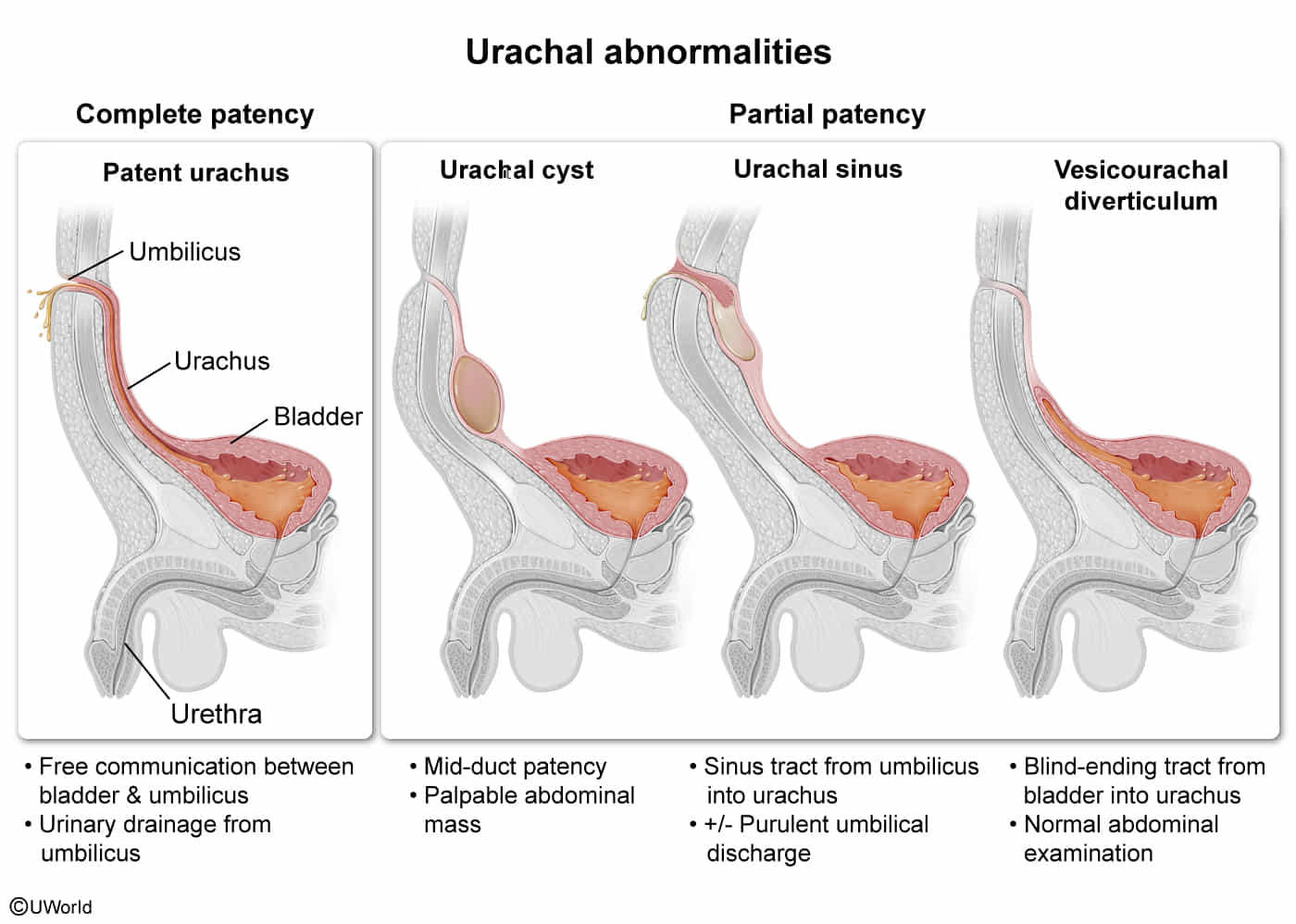Epidemiology
- Prevalence: most common congenital gastrointestinal tract anomaly
- Rule of 2s for Meckel’s Diverticulum
- 2% of the population
- 2 feet from the ileocecal valve
- 2 inches in length
- 2 years is the most common age for symptomatic presentation
- 2 types of heterotopic mucosa (gastric and pancreatic)
Etiology
- The omphalomesenteric duct (vitelline or vitellointestinal) is a patent tubular structure connecting the yolk sac to the alimentary tract in the embryo.
- The duct is normally obliterated by the 6–7th week of intrauterine life.
- Incomplete obliteration of the omphalomesenteric duct → persistence of the proximal (intestinal) segment of the duct → Meckel diverticulum


- There may be two types of mucosal lining
- Native ileal mucosa
- Ectopic mucosa
- Most common: acid-producing gastric mucosa (∼ 60%)

- Other types include pancreatic, colonic, and duodenal mucosa.
- Most common: acid-producing gastric mucosa (∼ 60%)
Tip
Similar to Urachal abnormalities
Pathophysiology
Clinical features
- Asymptomatic
- Most common manifestation
- Symptomatic
- Lower gastrointestinal bleeding (most common feature)
- Presence of ectopic gastric mucosa or pancreatic tissue → acid or enzyme secretion within the diverticulum → ileal ulceration → bleeding
- Can manifest as:
- Hematochezia
- Indicates a brisk hemorrhage
- Tarry stools
- Indicate a slow hemorrhage
- Currant jelly stools
- Indicate intussusception with bowel ischemia
- Hematochezia
- Lower gastrointestinal bleeding (most common feature)
Diagnostics
Meckel scintigraphy scan (Meckel scan): a noninvasive nuclear medicine imaging technique using radiolabelled technetium (99mTc), which is preferentially absorbed by the gastric mucosa and can identify ectopic gastric mucosa
Treatment
Complications
- Bowel obstruction (usually affects terminal ileum) due to
- Intussusception
- Volvulus

